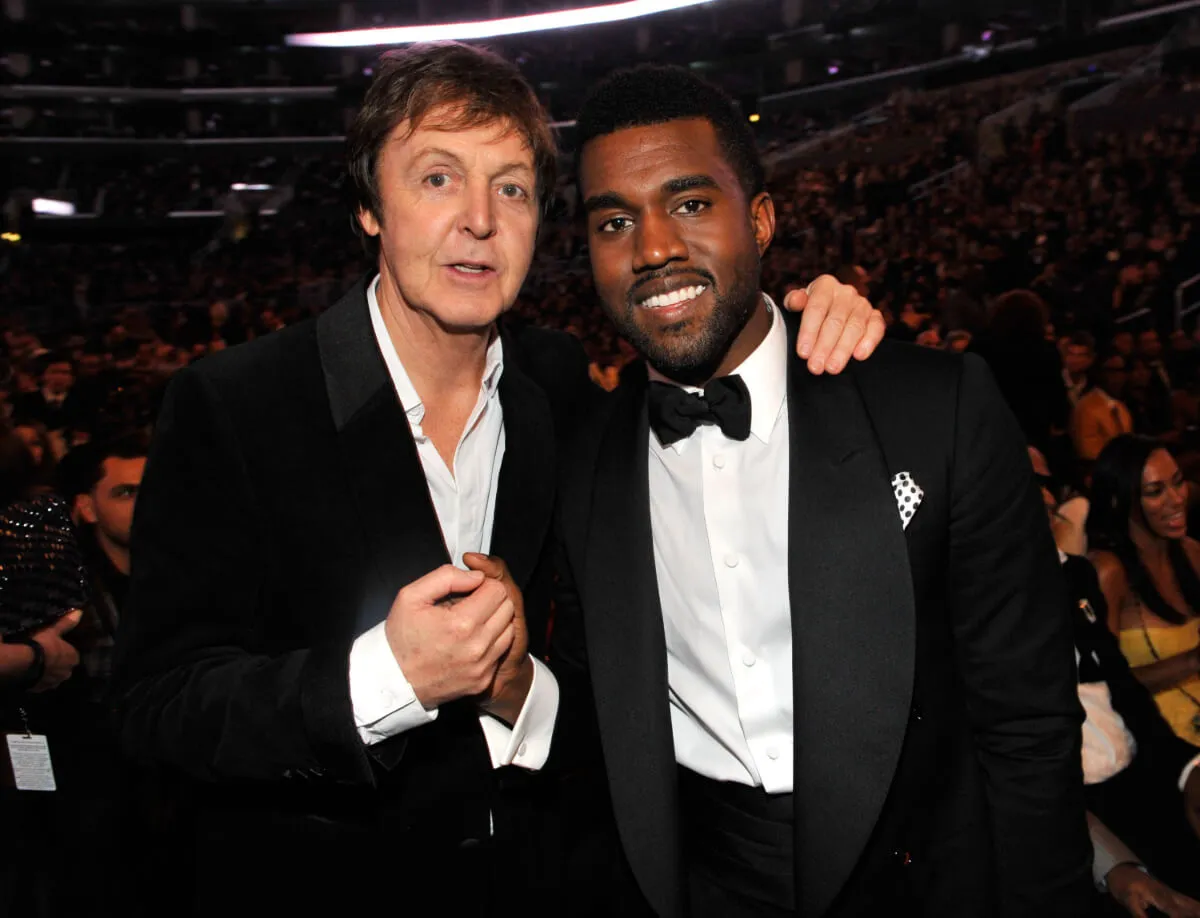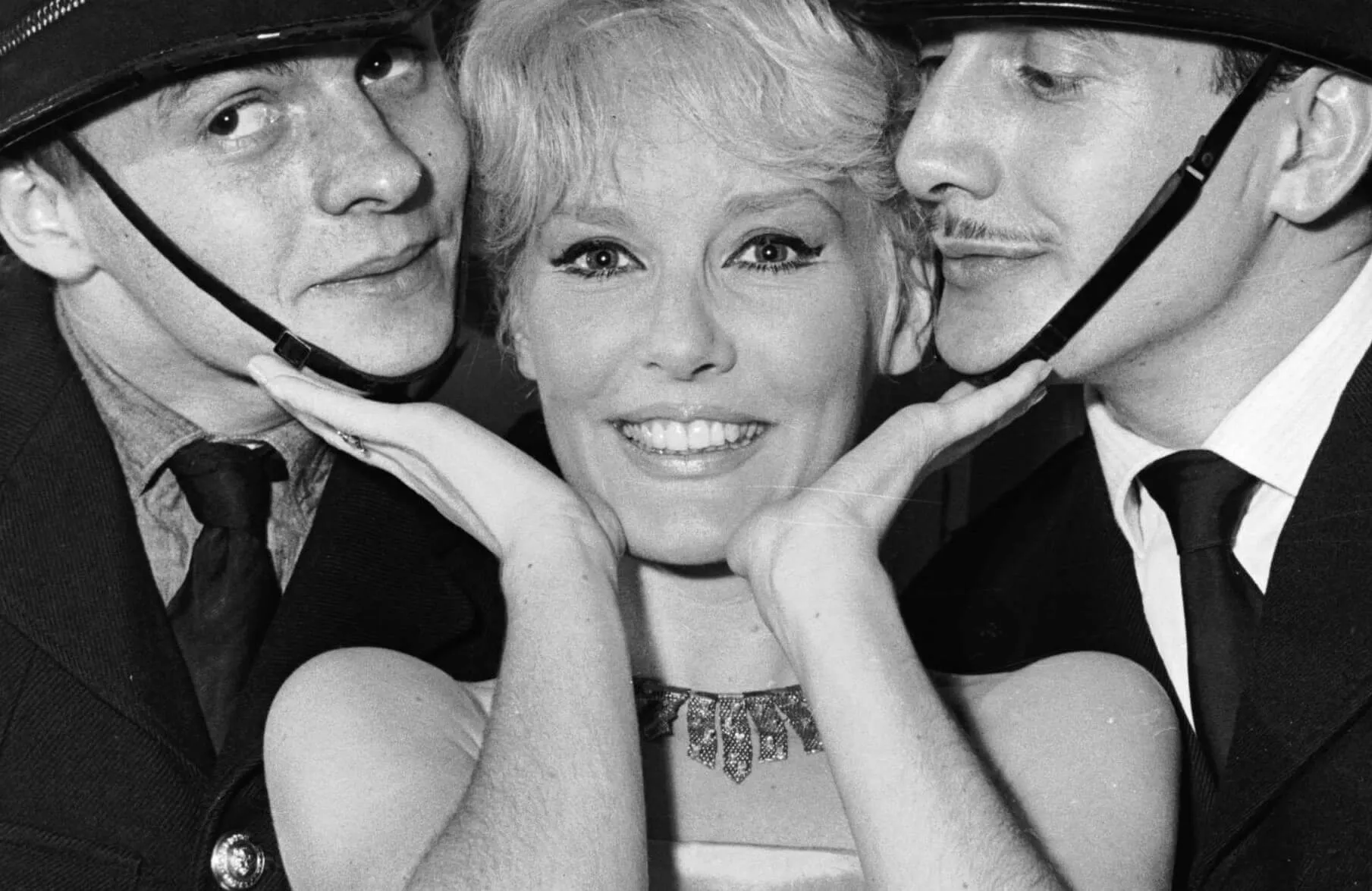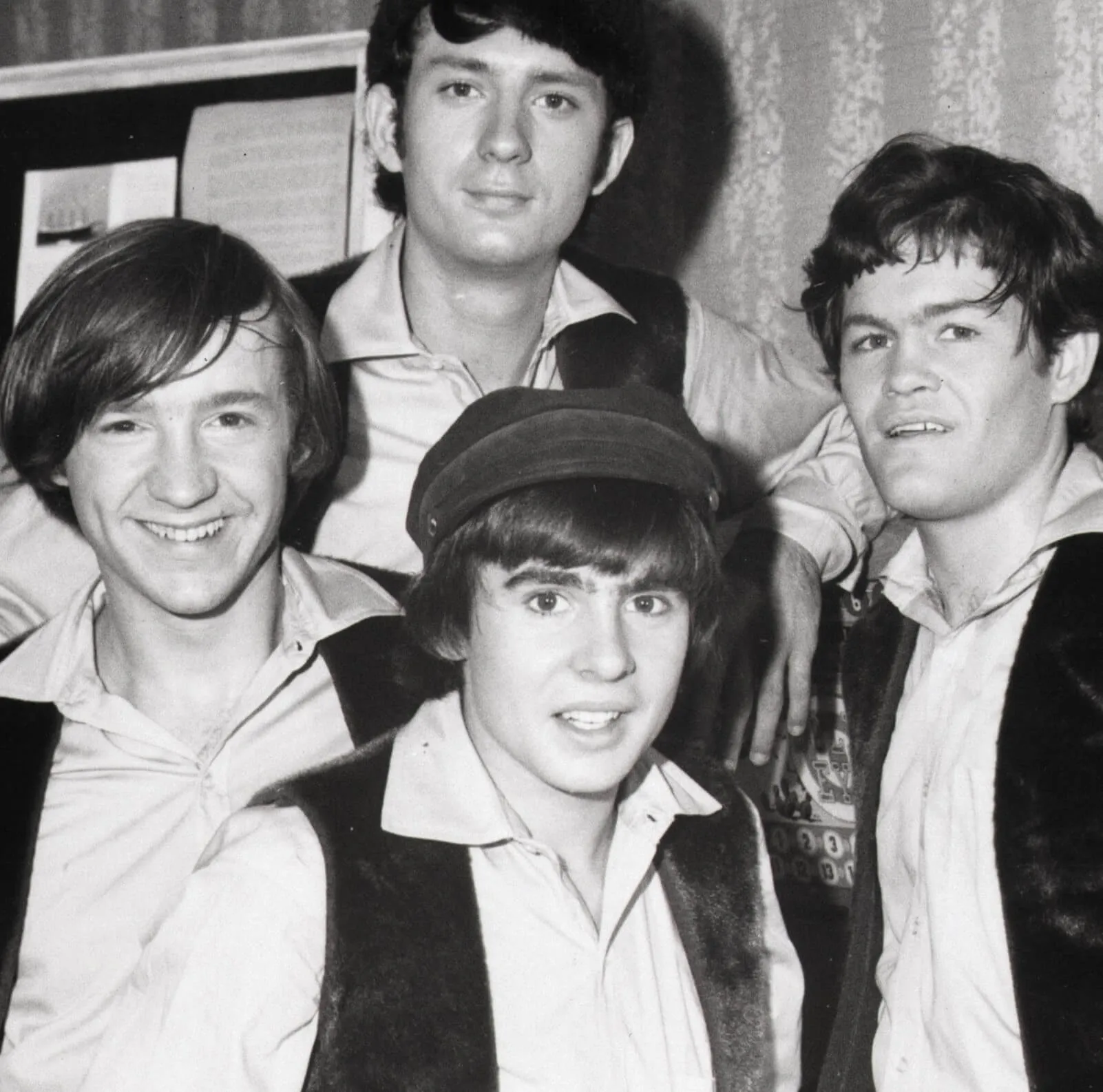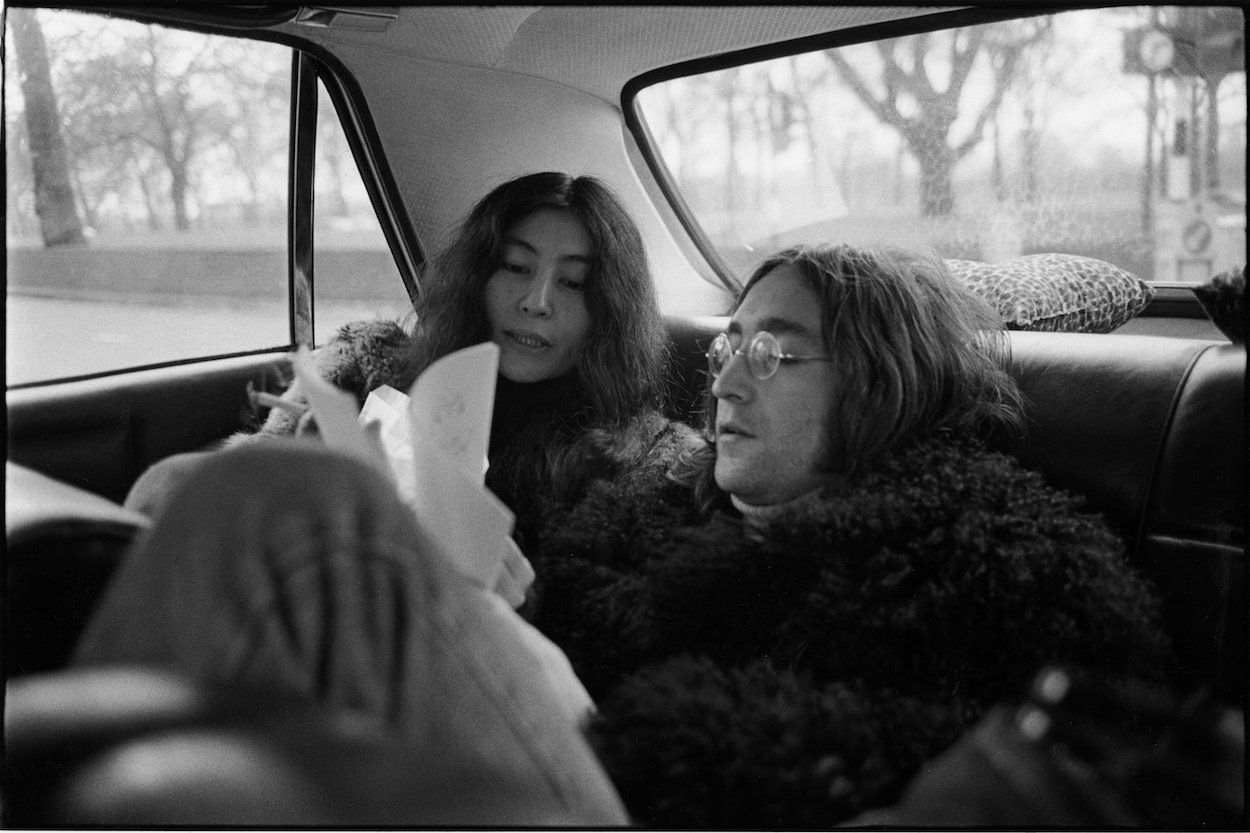
Yoko Ono Was ‘Totally Naive’ About Her Relationship With John Lennon
John Lennon and The Beatles got lucky when they decided not to abandon the song that became their first big hit. Paul McCartney said John’s first marriage was doomed to fail, and it did, but John got lucky again when he found his muse in Yoko Ono. They first met in late 1966, and their relationship lasted until he died in 1980. It was nearly love at first sight, but Yoko was “totally naive” about one aspect of her relationship with John.
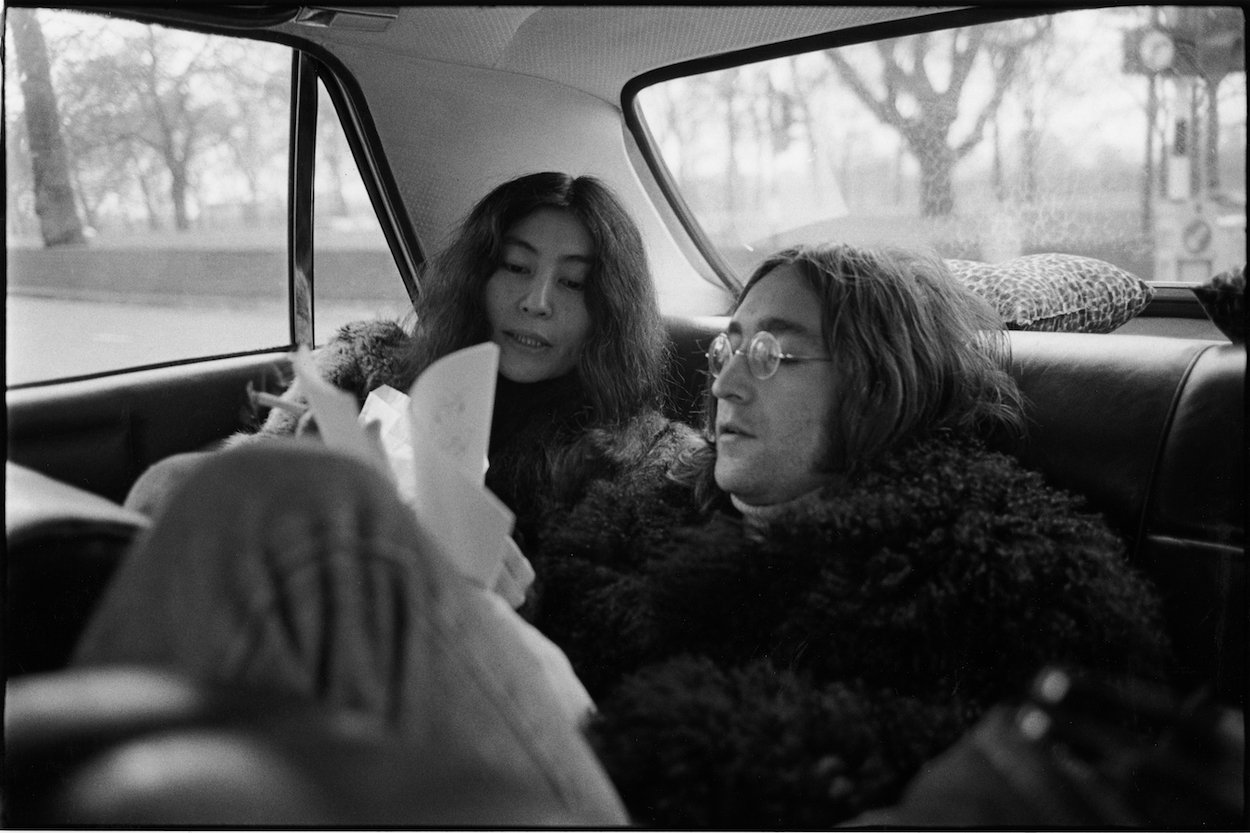
John Lennon brought Yoko Ono into The Beatles’ inner circle
The Fab Four forged close bonds on their van rides to shows, hotel room stays, and work in the studio. John rocked the boat when he brought Yoko Ono into The Beatles’ inner circle.
Paul and George Harrison were far from thrilled to share the studio with Yoko. Ringo Starr’s reaction was more welcoming, and John never forgot it. Half of the Fab Four barely tolerated the intrusion, which was pretty much par for the course at the time.
Barely more than 20 years removed from the end of the conflict, many people in England associated Yoko’s Japanese heritage with the axis powers of World War II. A similar wave of animosity toward Asian minorities surfaced in the United Kingdom during the coronavirus (COVID-19) pandemic, The Independent reported.
Yoko was ‘totally naive’ about one aspect of her relationship with John — the animosity toward her as a minority
John first met Yoko in 1966 while still married to Cynthia Lennon. Yet they were married less than three years later, even though Yoko criticized his work on their first artistic collaboration.
The end of his marriage and Yoko being the new love didn’t make her the most popular person in England, Peter Doggett writes in You Never Give Me Your Money: “[W]orst of all, she was Japanese at a time when that was virtually a synonym for the extreme cruelty inflicted on prisoners of war little more than twenty years earlier. Many British people who would have regarded themselves as tolerant made an exception for the Japanese, who were widely felt to be slitty-eyed, merciless, and sadistic.”
Whether she was so deeply in love she didn’t see it or such an unflinching artist that she didn’t care, Yoko later admitted he was naive about that aspect of her relationship with John (per Doggett):
“I can understand how they felt. It’s just that I was totally naive about all that.”
Yoko Ono
The tolerance for the Japanese remained low in England at the time. Her appearance in The Beatles’ inner circle at a time when the band started to fracture made her the scapegoat for the band’s demise. As John once said, the press had a field day writing derogatory things about Yoko. The fact that the band was on the skids for years before the breakup didn’t matter. Still, Yoko remained naive about how deep and prevalent the hatred for her was.
The couple survived the hatred that came their way
She was seen as the person who ended a marriage and broke up the world’s most popular band. Being an Asian minority might have made the hatred worse, though Yoko said she was naive about that part of her relationship with John.
The bad press and the general hatred coming their way didn’t drive a wedge in Yoko and John’s relationship. They collaborated throughout their time as a couple, up until his murder in late 1980.
John and Yoko recorded two albums in 1969 — Life With Two Lions and Wedding Album. They made Yoko Ono/Plastic Ono Band in 1970, and Some Time in New York City followed in 1972, per All Music.
Their relationship endured some tough times during John’s lost weekend period, but John and Yoko regrouped for 1980’s Double Fantasy and 1984’s Milk and Honey, a posthumous release after John’s 1980 murder.
Yoko Ono was naive about how her being a minority affected her relationship with John Lennon. In the end, it didn’t matter. They survived barbs from bandmates, bad press, and general animosity as they forged strong artistic and personal relationships.
For more on the entertainment world and exclusive interviews, subscribe to Showbiz Cheat Sheet’s YouTube channel.
